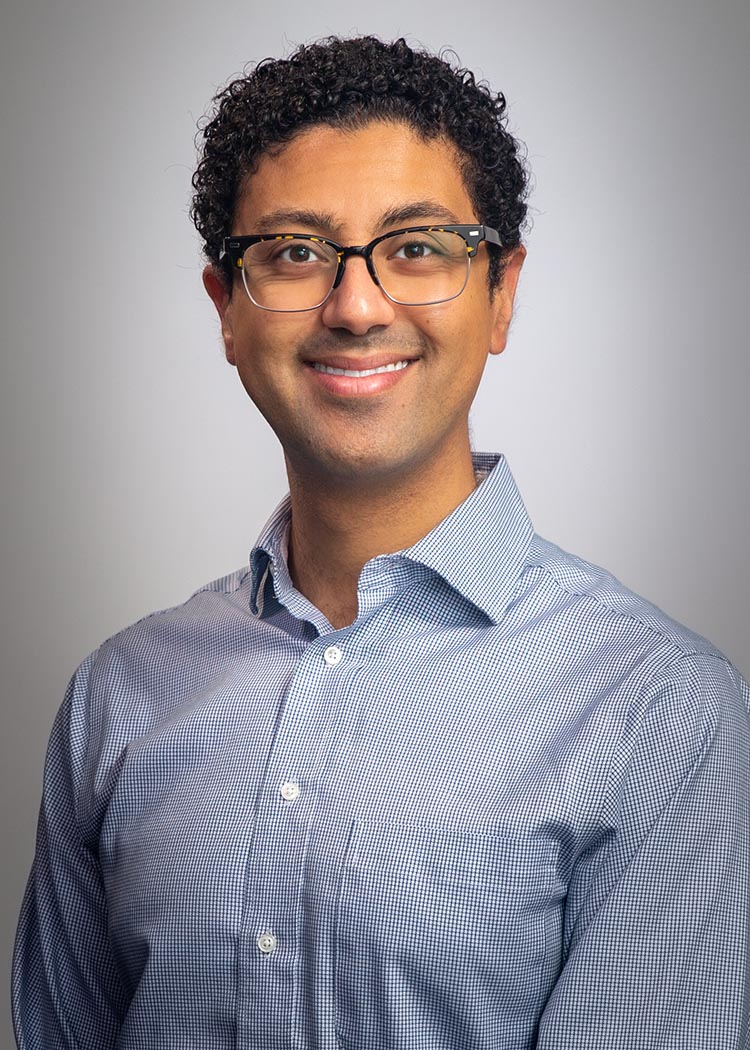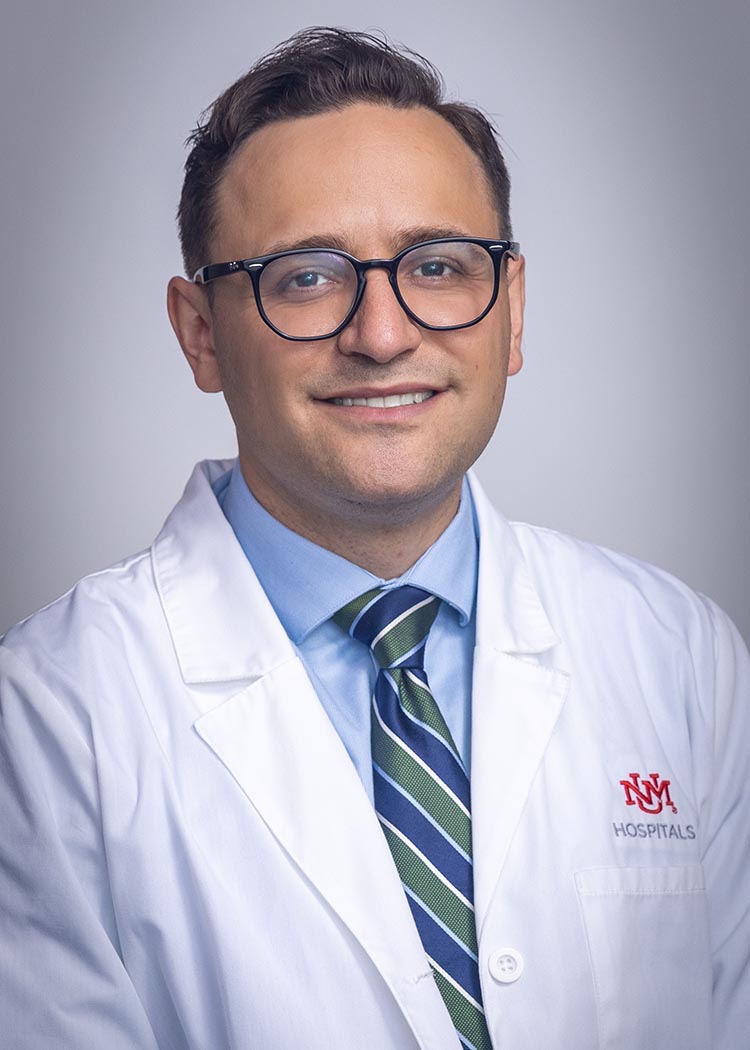Nizhoni Begay has spent most of her life trying to control her focal epileptic seizures with a panoply of powerful drugs, many of which have strong and unpleasant side effects.
Earlier this year, the Rio Rancho teen underwent a series of procedures at The University of New Mexico Hospital to implant a device in her brain capable of detecting the onset of seizure and interrupting it with a burst of electrical current to the affected tissue.
Responsive neurostimulation (RNS) devices have been used to treat epilepsy for close to a decade, but Nizhoni’s surgery was the first time one has been implanted in a pediatric patient in New Mexico.
“We use it for people who have seizures that emanate from more than one place in the brain or from a place that cannot be removed because it would cause a deficit,” said Michael Kogan, MD, an assistant professor in the UNM Department of Neurosurgery who, with colleague James Botros, MD, implanted the device. In coming months, doctors will adjust the current for maximum effectiveness.
For Nizhoni, 17, and her parents, Michael and Nina Begay, the RNS implant offers the tantalizing possibility of relief after years of searching for an effective treatment.
“It gives me hope,” Nina says. “We’ve gone through medications. We’ve gone through brain resections. It gives me hope that they’ll find the right setting. I just know it’s going to be a process – for her and for us.”
Nizhoni – whose name means “beauty” in Diné – had her first seizure as a toddler when the family was living in Crownpoint, N.M., on the Navajo Nation. “We didn’t even know it was a seizure,” Nina says. “She would stop and freeze.” An MRI led to a diagnosis of epilepsy, likely caused by a stroke in utero.
When Nizhoni was in the third grade the family moved to Rio Rancho and she started seeing UNM physicians. Through the years they tried assorted drug therapies to try to control the seizures. “She had gone through many, many medications and her seizures were actually increasing,” Nina said.
Nizhoni’s seizures, which originate in the motor cortex on the left side of her brain, last 10 to 20 seconds. “Her right side is affected,” Nina said. “Her right arm goes up and gets really rigid. Her leg will also come up and be shaking as well or be just rigid.”
Afterwards, “She sometimes she comes out of it and she’s good to go, and sometimes it can take five minutes, and sometimes it can take 30 minutes to come back to her normal self. It really depends on the strength of the seizure that she has at the time.”
Nizhoni remains conscious during the seizures, which are excruciating. “Depending on the rigidness and strongness of it, it will hurt,” she said. “But it just comes and goes.”
In 2018, Nizhoni underwent surgery at Children’s Hospital Colorado to remove a small portion of tissue at the spot in her brain where the seizures were originating.
“They couldn’t take much out,” Nina says. “It was 50-50 whether it could work or it could not work. We actually did see an improvement where she was able to go longer without seizures, but she was having a lot of nighttime seizures still.”
As it became clear that Nizhoni was among the 30 percent or so of patients whose seizures can’t be controlled by medication, the Begays learned about RNS from a member of their epilepsy support group and brought it up with UNM doctors, including Botros, Kogan and Aaron Cardon, MD, a neurologist specializing in pediatric epilepsy.
“They came to me asking about this RNS neuromodulation in order to monitor the seizures and interrupt them with electric current,” Cardon said. “We can interrupt seizures in real time if we can find that focus of the patient’s epilepsy. We’ve known for 50-plus years that we can stop seizures if we shock at those sites.”
Nizhoni was a candidate for RNS because her condition was refractory, meaning she had failed two or more drug treatments. “Most patients, when we get to this point in their evaluation, are on three or more medications, plus rescue medications,” Cardon said. Nizhoni was on five different drugs.
The RNS procedure is invasive, and involves removing a portion of the skull to insert thin electrodes into the brain. “Our goal in offering these therapies is better seizure control,” he said. “Patients are motivated with wanting fewer meds and side effects.”
But before the RNS implantation could occur, Nizhoni’s doctors needed to identify the damaged area of her brain with pinpoint precision using a procedure called stereoelectroencephalography (sEEG). The procedure involved the placement of multiple electrodes in her brain to detect seizure onsets – its first use in a pediatric patient in New Mexico.
“When the neurologist is reviewing the EEG information they can see which electrodes detect the seizure activity the earliest,” Kogan said. “They can use that to triangulate the zone of onset.”
Nizhoni had to stay in the hospital for a week with the electrodes implanted waiting for a seizure to occur. “It was uncomfortable,” she remembers. After doctors confirmed she had experienced a seizure and verified the location of the seizure activity, they scheduled the RNS implant surgery.
Kogan says the effectiveness of surgeries to remove damaged brain tissue tends to wane over time.
“Their rate of control is highest in the first six months,” he says. “With RNS, the curve moves in the opposite direction, where at first it’s not that effective, but over time as it learns, it’s more effective. It’s really a nice tool in the overall armamentarium of treating seizures that cannot be managed by other means.”
Nizhoni was sent home with a special laptop computer that records her brain’s electrical activity. Each day, she passes a special wand over her scalp that uploads the data, which can later be reviewed by Cardon, who will adjust the electrical intervention accordingly.
For Nizhoni, I’m very optimistic that having a targeted intracranial responsive therapy is going to be the most effect treatment for her.
“For Nizhoni, I’m very optimistic that having a targeted intracranial responsive therapy is going to be the most effect treatment for her,” he said.
UNM neurologists and neurosurgeons have two open trials to investigate the use of RNS in focal pediatric epilepsy patients and for patients older than 12 with intractable primary generalized epilepsy, Cardon said.
A senior at Santa Fe Indian School, where her father teaches social studies, Nizhoni plans to attend the Institute of American Indian Arts after graduation next spring and is looking forward to a better quality of life.
“They are resilient and wonderful people,” Cardon says of Nizhoni and her parents. “They approach me with humility, but eternal optimism. I’m just so impressed that they’re still working with us and seeking the best for her. She just keeps bouncing back and keeps going on.”



